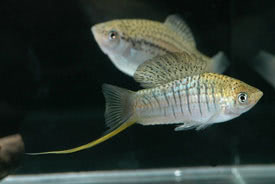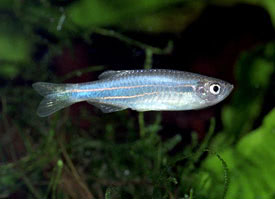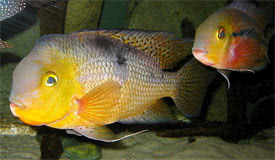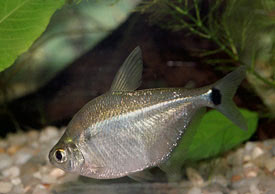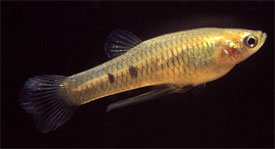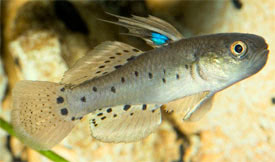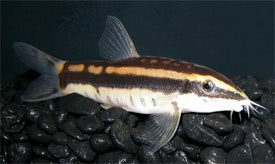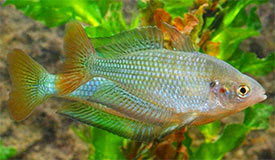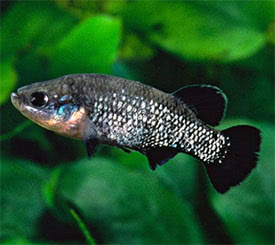
 Magyarul / Hungarian
Magyarul / Hungarian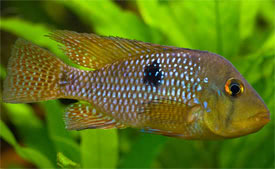
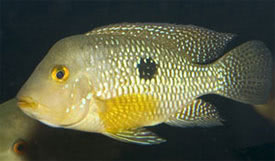
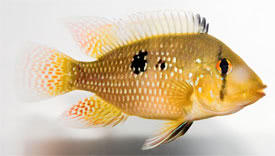

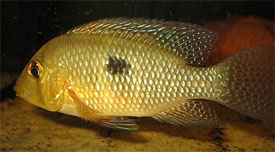
- Scientific name: Geophagus brasiliensis
- Synonyms: Acara brasiliensis, Chromis brasiliensis, Geophagus bucephalus, Geophagus labiatus, Geophagus obscura, Geophagus pygmaeus, Geophagus rhabdotus, Geophagus scymnophilus
- Common name: Pearl Cichlid
- Group: Cichlids
- Habitat: South America; East Brazil
- Size: Male:23-30 cm, female: 15 cm
- Biotope: In coastal rivers, standing and brackish water of eastern Brazil; prefers steep, rocky banks with caves and hiding places.
- Social behavior: Territorial, the species is a burrower. It is more tolerant of tank mates than most Geophagus sp. It forms a nuclear family.
- Diet: Omnivorous; All types of live foods, flakes, also accepts tablets, beef-heart and chopped fish-meat.
- Breeding: Quite easy
- Tank: Minimum 200 litres for 1 pair
- Population: 1 male and 2-3 females for 250 litres
- Decoration: Needs a bottom of coarse gravel with fine sand in areas. Add hiding places among rocks and roots. Plants should be hardy, planted in pots.
- Temperature: 20-25 °C
- pH: 6.7-8.2
- Hardness: 5-20 NK°
- Lifespan: 10-15 years
Description: The Pearl Eartheater is a laterally compressed cichlid with a rounded forehead. The anal, dorsal, and caudal fins are large when compared to those of other Eartheaters. The body color ranges from yellow to brown to dark red, and each scale is marked with a blue, green, or yellow spot. The coloring of this fish can change according to their mood or when mating. The fins have the same pattern and coloring as the scales, except to have more blue and violet hues. The iris of the eye is golden with a black band running through it. A lateral stripe, sometimes unnoticeable, runs from the eye to the base of the caudal fin. They may or may not have a faded dark spot on their body at about the level of the eye. Fish under 3" (8 cm) are an unattractive brown color.
Difficult to identify sexes though there is difference in the genital papillae. It is pointed on the male and round and blunt on the female. The male's dorsal fin is often longer and there are sometimes traces of a bump on the forehead of older males. It is wise to start with a group of young animals and let them pair off.
For breeding use neutral to slightly acid (pH 6.5-7.0), and soft to medium hard (5-10 dGH°) water with a temperature between 24-27 °C. Condition the pair with nutritious live foods. Open breeders, the female spawns 600-800 eggs on such cleaned surfaces as rocks, in darker, hiding places. The female cares for the eggs and the male defends the territory. It is sometimes difficult to find a pair suitable for breeding. If the fish do not harmonize, the parents may devour the eggs. Start feeding the fry with crushed dry foods and Artemia nauplii. The young grow quickly.





